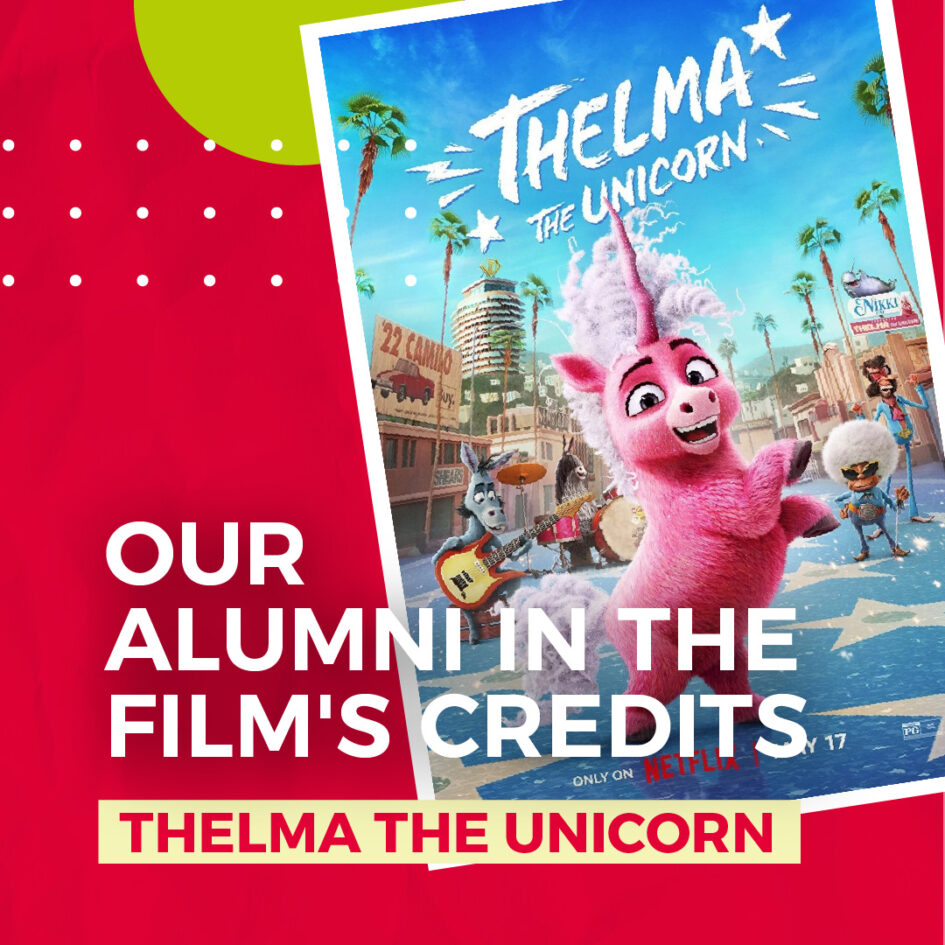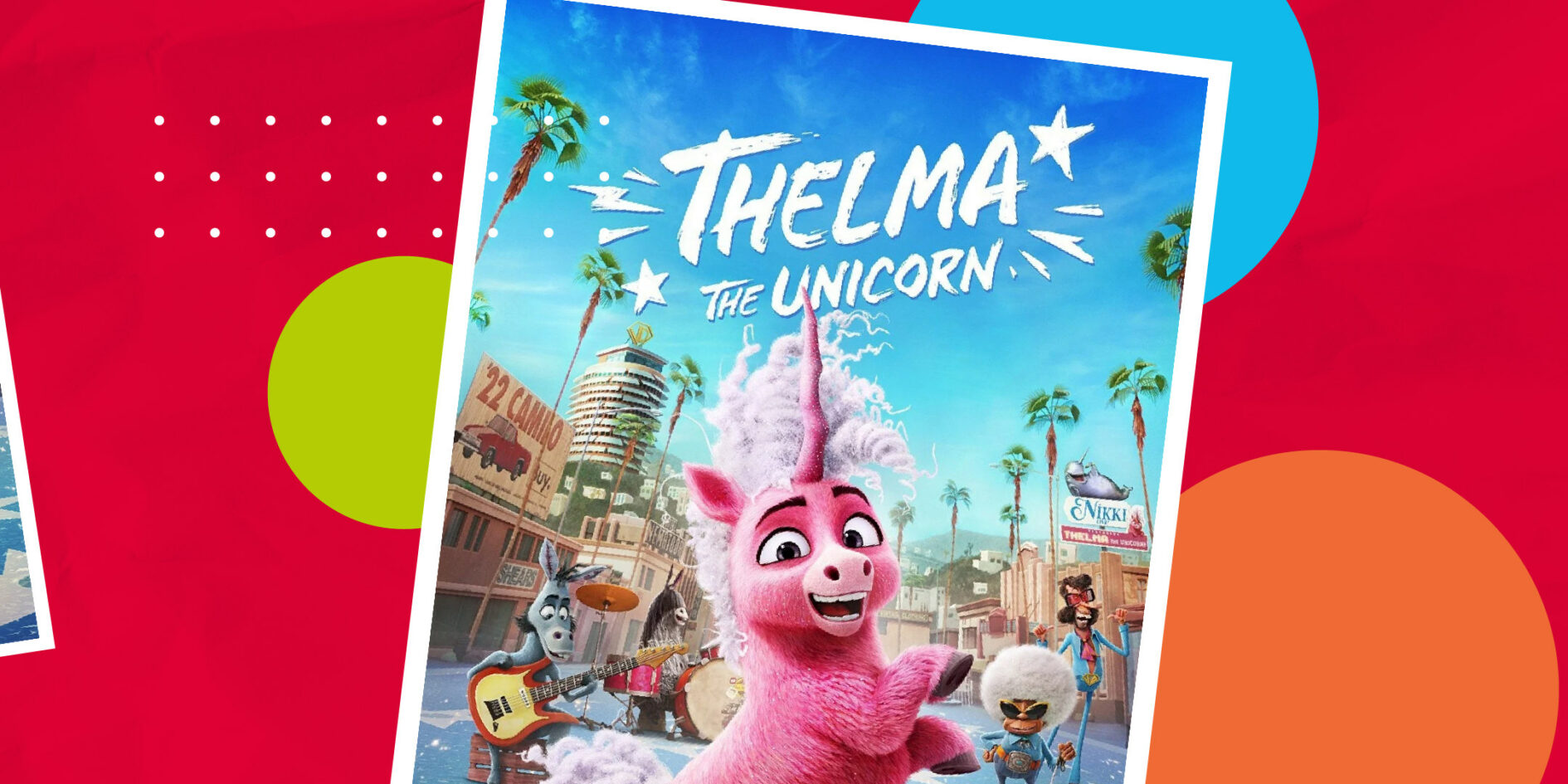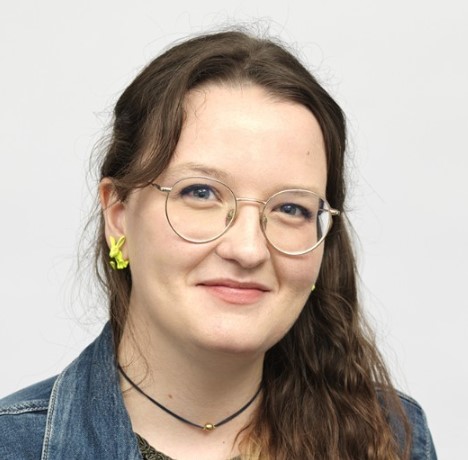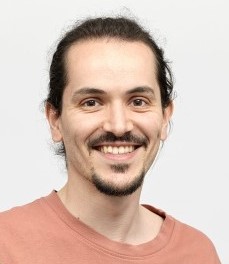
Our alumni in the credits for Thelma The Unicorn !
News, School . 17 May. 2024
Today streaming giant Netflix is releasing the highly-anticipated animated film “Thelma The Unicorn” to French audiences. Two of our former students helped create the magic of this feature-length film … Discover their interviews !
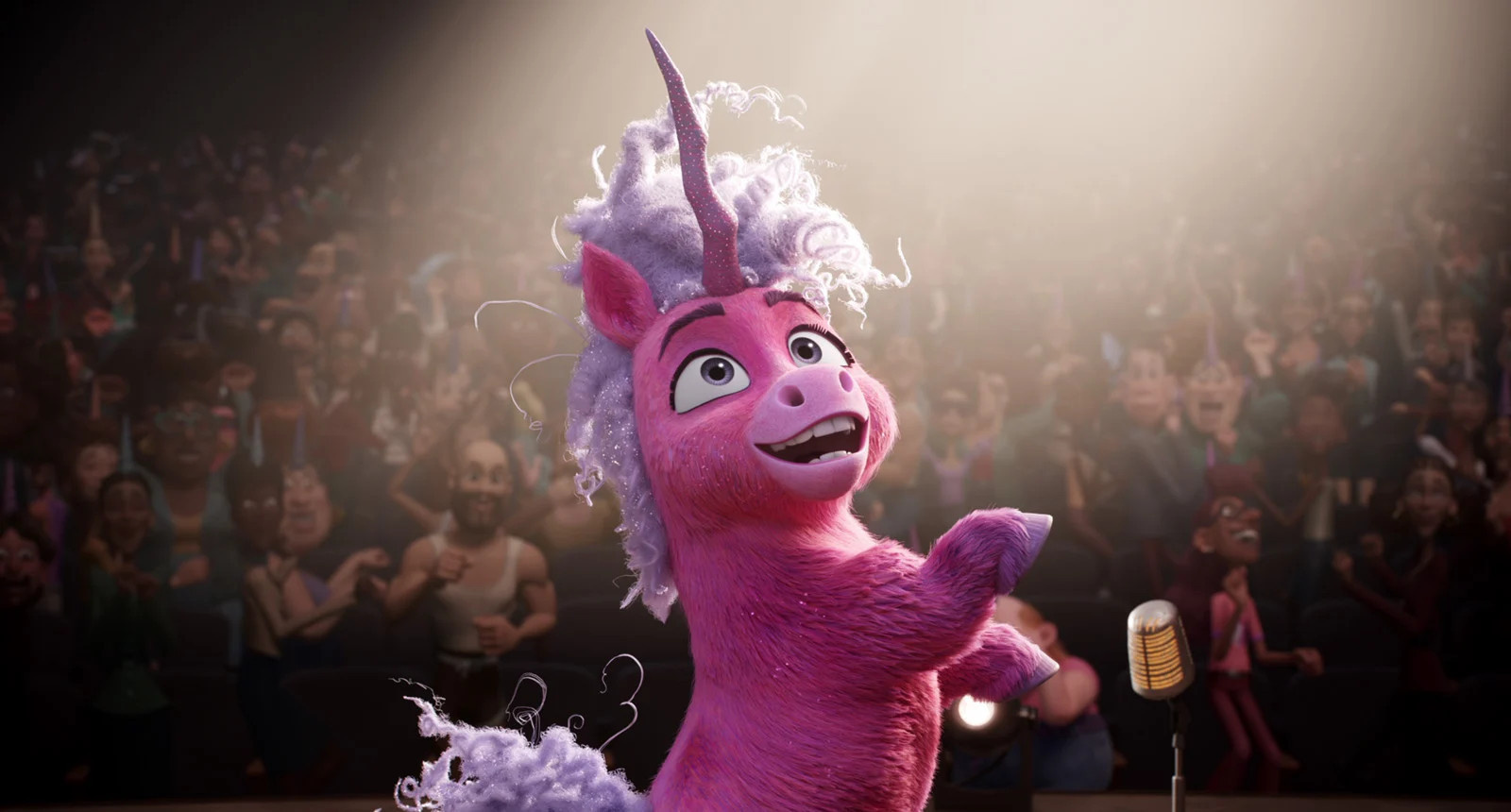
Directed by Lynn Wang and Jared Hess, “Thelma The Unicorn” is an adaptation of the best-selling book by Aaron Blabey.
The film tells the story of Thelma, a little unicorn with a pure heart and and modest aspirations, who dreams of a glittering life full of fame.
By a twist of pink and glittery fate, Thelma is transformed into a unicorn and instantly achieves worldwide fame.
But this glamourous new existence comes with challenges and important lessons about identity, friendship and true happiness.
On this project, the impeccable art direction and fluid animation have been praised by critics, underlining the exceptional quality of the production.
We are particularly proud to announce that two of our former students feature in the film. Lisa Chataigner and Tom Pinard contributed as Composing Artists, and both brought their expertise and passion to the project.
They explain their missions and tell you a few anecdotes…
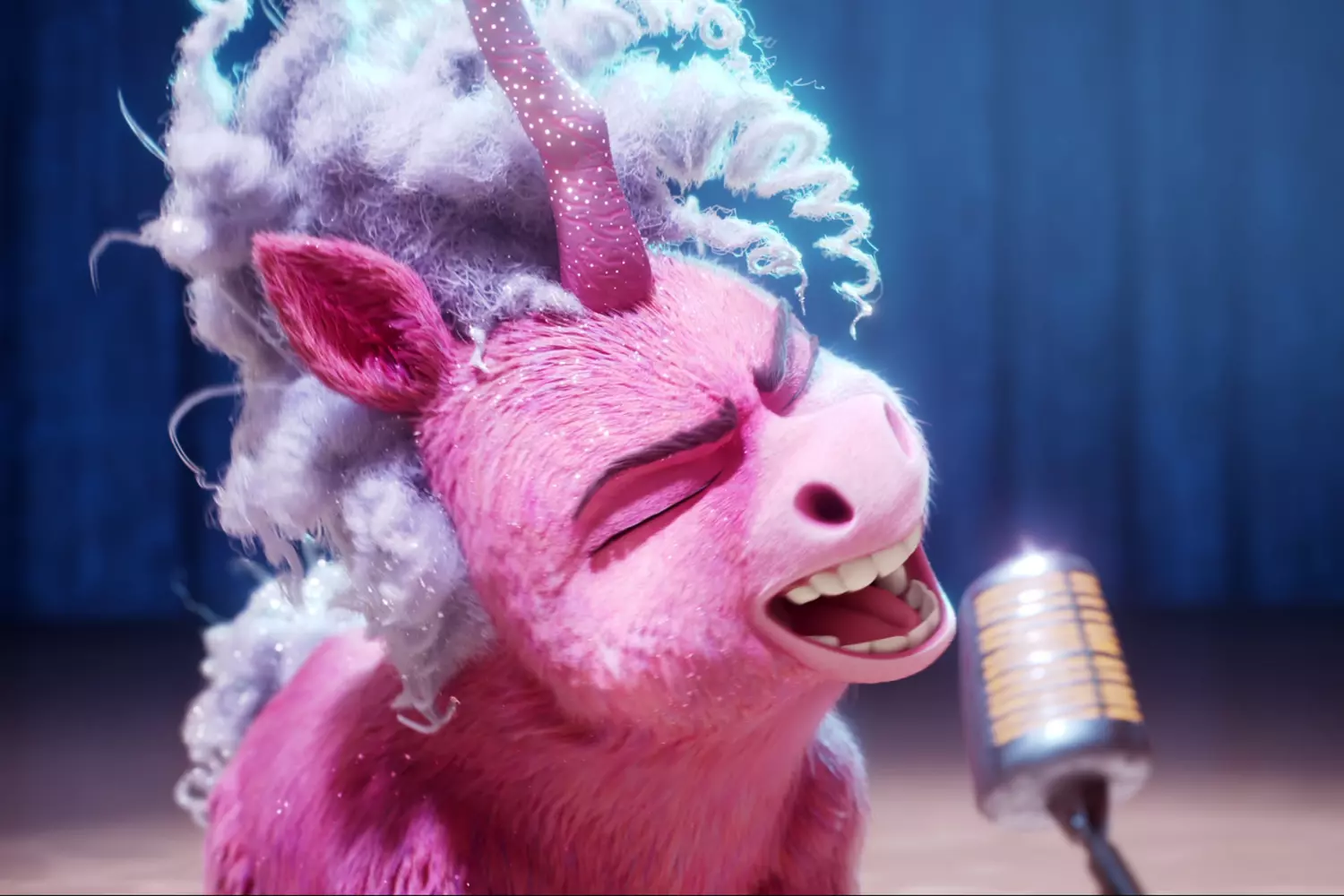
LISA CHATAIGNER
Compositing Artist At Mikros Animation
Can you explain your position on Thelma the unicorn ?
On Thelma the Unicorn I was Compositing Artist. Compositing is a post-production stage that takes place after the lighting stage, once all the images have been rendered. Our role is to recompose the different elements of the image to create a harmonious rendering that enhances the image. To do this, we retouch the images so that they correspond to the artistic direction and are as close as possible to the keyshots. What interests me in this job is being able to put forward different ideas or intentions while respecting the director’s vision. I appreciate this creative freedom.
What was the biggest challenge you faced on this film?
My biggest challenge was to gain confidence in myself. It was the very first project I had worked on after my studies, so at first I felt a lot of stress and moments of doubt. In the end it went really well thanks to the team, I couldn’t have imagined anything better for my first experience. In our business, it’s very important to help each other, to listen to each other and to realise that we are always learning from each other. I quickly felt at ease in this team and very quickly realised that after school I already had all the tools I needed to work professionally.
I would like to take this opportunity to thank the compositing and lighting team at Thelma, as well as the team at Mikros Montréal. It was a real pleasure working with you! And also the Ninja Turtle compositing team, with whom I was lucky enough to work!
Has this film given you any particular skills (even soft skills)?
This film taught me to develop my artistic sense, my eye and to pay close attention to small details. The difficulty with a feature film is that the teams are made up of more than twenty people and you still have to keep a consistent look right through to the end. The principle of our work is that nothing should disturb the viewer’s eye so that they can immerse themselves in the film and live the stories with the characters.
A look back at your student career :
Why did you choose Esma, and what has been your career path at the school?
I came across Esma by chance when I was looking for a 3d animation school. I visited a few and it was the school I felt most at home with. After that, I went to open days several times to talk to students and teachers to make sure I had made the right choice.
As far as my studies are concerned, I did a baccalauréat S and then, from the age of 8, I took classes on Wednesdays and evenings at the Brest School of Fine Arts. This enabled me to pass the ESMA admission interview and go straight into the first year of 3d animation.
My course went really well, I loved the atmosphere, the creativity and the contact with the teachers and students. The first two years are very intense, requiring a lot of investment but giving you all the foundations for the next two, when you have the opportunity to create your own short film from A to Z as a team. It’s an exciting time when you are learning an enormous amount and it’s the closest you will get to a professional reality.
What advice would you give to current students to help them succeed in their studies and in the world of work ?
My advice is to make the most of these years of study to experiment and try things out, and to support each other so that we can get through the most difficult periods with peace of mind. And don’t forget that we are still students, so make the most of these moments and above all have fun, that’s the most important thing. We do this job to give pleasure to others, so don’t forget to take pleasure in doing it. And go and see Thelma the Unicorn !!!
Find Lisa on her profile linkedin.com/in/lisa-chataigner
TOM PINARD
Compositing Artist at Mikros Animation – Generalist CG chez BUSTERWOOD
Can you explain your position on Thelma the unicorn ?
I was on the last stage of the production of Thelma the Unicorn, that of compositing. The job of Compositing Artist consists of assembling the images rendered in 3D by the lighting department and adding various effects such as colour corrections or depth of field to make the image even more beautiful. I also had the chance to work on IMF (Image Finaling) at the very end of production to correct any final imperfections in the image before the shot is final and ready for the big screen.
What was the biggest challenge you faced on this film?
One of the biggest challenges for me was working on a fairly dark sequence in the film. In this sequence, Thelma crosses a corridor with greenish lights, which tended to make Thelma’s hair look very dull compared to the daylight sequences. It took several rounds of feedback from my superiors and the director to finally find the right colour for Thelma’s hair in this sequence.
Has this film given you any particular skills (even soft skills)?
Yes, I would say that working on this film really taught me to pay close attention to the smallest flaws in an image and how to resolve them.
A look back at your student career :
Why did you choose Esma, and what has been your career path at the school?
I chose ESMA because I had seen a number of short films on YouTube, as well as “Château de Sable” at the Futuroscope at the time. Seeing the quality of these films really made me want to make one myself.
I arrived at ESMA in 2017, first of all I joined the MANAA (Mise A Niveau en Arts Appliqués) then after two years of general training I specialised in rendering (Lighting, Rendering, Compositing) and FXs. In 2022, with 7 other people*, we made “Létal Morbier”, a technically demanding film about a colony of mice.
*Raphaël AUDUREAU, Laurène BINET, Solène DE VULPIAN, Lilian LARIGNON, Elise LARVOR, Thibaut LE MELEDO and Hugo TABONE
What advice would you give to current students to help them succeed in their studies and in the world of work ?
ESMA is a school that gives us the chance to push our creativity to the limit on many projects. When we work in a studio, especially in the ‘big’ studios, we tend to only do one stage of a film, but the school lets us try out all the production stages, so it is an incredible opportunity to innovate and enjoy ourselves creatively. When we leave school, our graduation projects and films are our entry point to the studios, so don’t hesitate to try out different styles.
Find Tom on his profil linkedin.com/in/pinard-tom/



